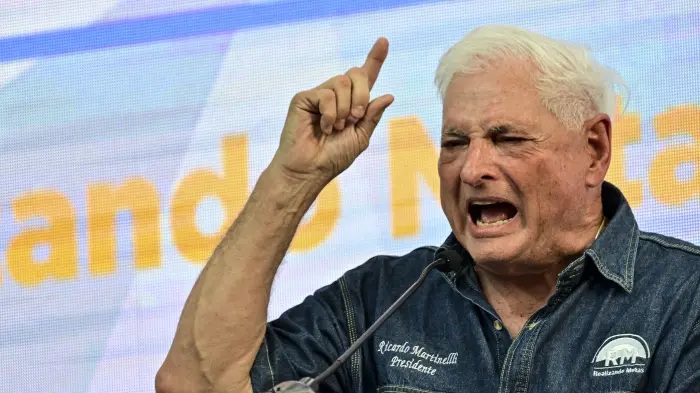OPINION: Panama resident artist helps fill Miami coffers

By Mark Scheinbaum
MIAMI (Dec. 8, 2016)—As a little kid, I did not know Carlos Cruz-Diez from Woody Woodpecker. My exposure to “art” came with the New York Student Art League in high school, when a patient teacher gave me paint and graph paper and tried to teach me stove pipe sign lettering.
When in college I watched my cousin, John Manno using his blowtorch to form gigantic sculptures. That was it.
Kids today sometimes have a world of art, music and literature at their video fingers, but too often they are ignorant of the legacy of creativity which awaits their adult lives.
Thus, I was pleased and fascinated during the just-ended Miami Art Week and Art Basel Miami when more and more families brought their kids to venues lacking water slides, cotton candy, and Adventureland. Well, maybe at PINTA, the Wynwood based show of Latin art, Art Miami with 74,000 visitors, and the granddaddy, glitzy Art Basel Miami with 80,000 visitors, the youngsters were in a different kind of “Fantasyland.”
The two young boys walked by the colored lines of Carlos Cruz-Diez but their older sister, perhaps 11 or 12-years-old stopped to stare and sway.
You need to know, in case you are an art novice such as I that this is what you do with a star of the “kinetic” art movement. You stop, stare, and sway.
Venezuelan-born, French trained, and longtime Panamanian resident Cruz-Diez is 93-years-old, and probably already knows young people like his work.
Why? Because it is a constantly moving video game in a fixed location. You move your head or eyes slightly and the painting or sculpture moves.
It is Diamond Vision at Yankee Stadium on steroids. The lines move, the light moves, the colors change and move, and just maybe if you linger a bit too long, the walls, the room and the building seem to move.
Did everyone understand the value of Cruz-Diez as a national treasure in his own land?
Vandalism
Well, a couple of years ago one of his waterside sculptures had been neglected and was covered with graffiti during the “socialist” Chavez/Maduro “Bolivarian” new revolution.
The artist and his friends learned that the statue would be torn down for a construction site; he offered to send his own team of architects, restorers and planners to save the public art and complete the project with no damage to art. The government rejected the offer from the famous Venezuelan exile and pulverized the sculpture into oblivion. I wonder what art history courses the bulldozer drivers and their bosses had in school?
There is actually a point here.
Reuters reported this week that Art Week Miami starring Art Basel Miami at the Miami Beach Convention Center—with a supporting cast of 27 other fairs and art shows and more than 55 ancillary concerts, lectures, and other events, rang up more than $3 billion for the South Florida economy.
There were brunches and lectures at the University of Miami Lowe Museum, and the Frost collection at Florida International University. Visitors could marvel at the bayside vista and collection of Jorge Perez and his foundation at the Perez Museum.
Strollers in Wynwood visiting dozens of galleries walked by competitive skateboarders skimming through The Hive outdoor recreation and music venue. There was something for everyone of every age.
The rich and famous spent millions on art of Calder, Warhol, Koons, Haring or others, but the young and the restless could go home with things they liked for under $10,000, and local galleries had lots of inventory for under $1,000. Innovative local collectors and gallery owners such as economist Marco Canale of Gallery Canale-Diaz in Coral Gables is one of a growing number of dealers allowing customers to buy art “on time” with rates and terms similar to buying a new car.
More and more, the forces of art in the city (especially a growing regional event such as PINTA where more and more Hemispheric artists are featured each year and Brazil, Mexico and Argentina have a growing influence), show a multi-cultural view of global art to young people. Workshops in schools. Public art with big bright Romero Britto colors and soaring forms. Scholarships and summer camp programs. All of these things make school fun and interesting to youngsters who are often bored.
Now comes the sales pitch: is society saving money or anything else by cutting art, music or even huge chunks of athletics from the grade K-12 educational experience?
I think a report compiled for the Washington Post by a team of journalism students at Howard University sums up my feelings:
“Although arts and music programs tend to be seen as less important than reading, math or science, research has shown that arts education is academically beneficial.”
“’Low-income students who had arts-rich experiences in high schools were more than three times as likely to earn a B.A. as low-income students without those experiences.
And the new study from the National Endowment reports that low-income high school students who earned few or no arts credits were five times more likely not to graduate from high school than low-income students who earned many arts credits,’” Education Secretary Arne Duncan said in a report titled ‘Arts Education in Public Elementary and Secondary Schools: 2009-10.’”
“The arts have also proven to be a form of inspiration and expression for at-risk students, especially those in inner-city schools, and have been shown to improve their outlook on education.”
With pressures for good grades in math and science, and the social pressures of navigating youth through friends, foes, folks, bullies and best buddies, the kids today have plenty of pressures to battle every day. I wonder if handing out crayons and paper or clay and paint, while piping Mozart and Kanye into the overhead speakers produces better outcomes for the students and the world than another SAT Prep Course.
Frequent contributor Mark Scheinbaum is managing director at Shearson Financial in Boca Raton, Florida and over the years has taught classes at two high schools and four universities.





